
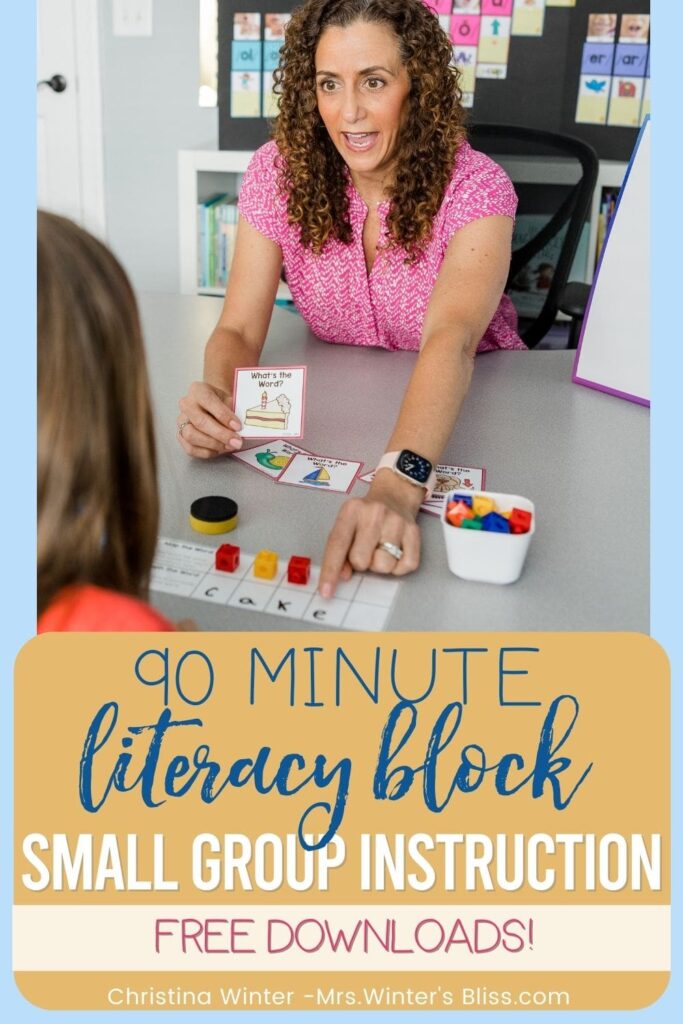
This is the second post in a blog series on the SoR 90-Minute Literacy Block and it focuses on small group instruction. In it, I discuss why small group instruction is important and explain how to group your students for small group instruction. I identify literacy skills to teach in small group and offer a list of science of reading-aligned resources designed for small group instruction. Finally, I leave you with a FREE, downloadable small group lesson planning template for kindergarten, first or second grade.
In my last post, I outlined a suggested schedule for your 90-minute science of reading-aligned literacy block. Today I am excited to focus on just one part of the block, your small group instruction.
Small group instruction is one of the key ways we can support our students and help increase achievement, but it isn’t always easy to pull off. It requires careful lesson planning, regular shuffling of student grouping, and strong management.
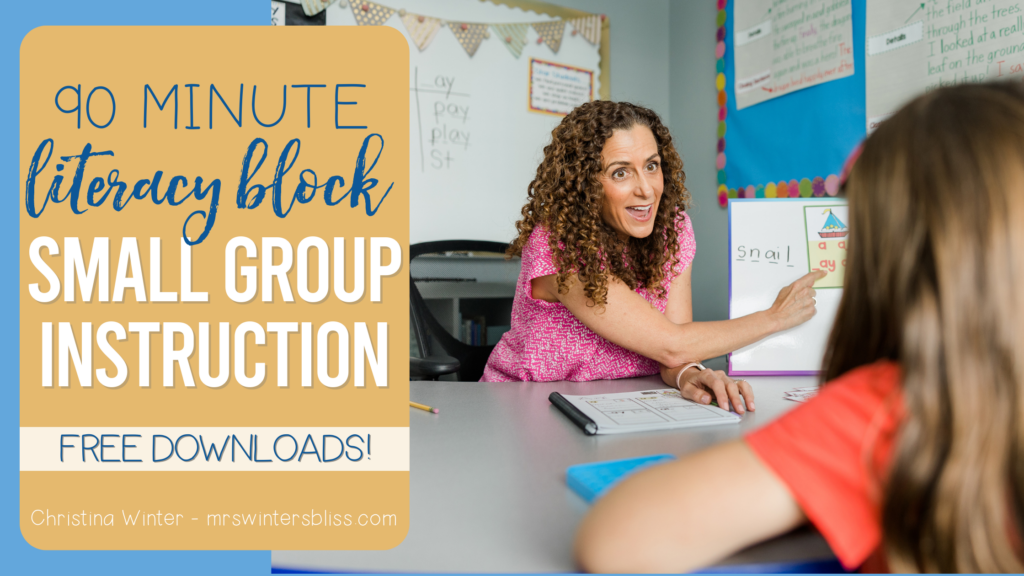
Today I’m excited to provide you with information and resources that will help you successfully implement small groups in your classroom. I’ll first share why small group instruction is important and explain how to group your students. I’ll then identify specific skills that you should teach in small groups and offer a list of science of reading-aligned resources designed for small group instruction. Finally, I’ll leave you with a FREE, downloadable small group lesson plan template to help you get your groups up and running!
Why is Small Group Instruction Important?
Research has found that small group instruction has a significant impact on student learning. Small groups allow you to provide explicit, targeted instruction to students based on their identified needs. It is an opportunity for students to receive the additional teaching and practice that is often needed for them to master the skills we teach.

Additionally, small group instruction allows a teacher to monitor student actions more closely and to provide frequent and individualized feedback. Correct responses receive immediate and specific reinforcement, while incorrect responses should be met with immediate corrective feedback.
Teaching in small groups allows you to perform informal assessments and collect data that helps drive your instruction. Watch closely as your students attempt a task to get a clear sense of their understandings and misconceptions.
Finally, students love their time in small groups. Of course, they love having your full attention. The immediate feedback you provide helps to build a connection and can boost students’ confidence.
How to Group Students for Small Group Instruction
Many teachers are unsure of how to group their students since we have begun to move away from leveled readers. The science of reading tells us that small groups should be grouped and regrouped by a shared skill deficit.
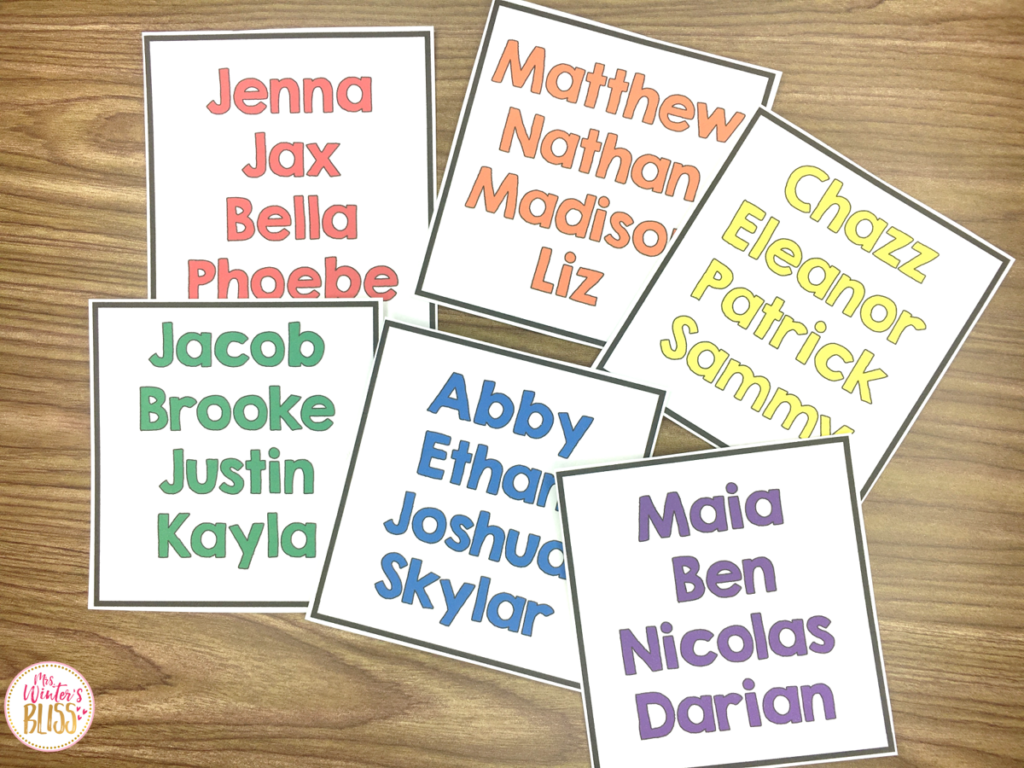
To properly group your students, you need a strong assessment system. You need data from a universal screener to identify students who might be at risk of difficulties in learning. This will give you a general sense of how to group students. Diagnostic assessments are then used to confirm the initial screening results. They help you to refine your groupings by determining a student’s specific difficulties. Finally, weekly progress monitoring and observation will help you adjust your groups. They are flexible. As needs change, groups change.
Phonics Screeners for Kindergarten, 1st and 2nd Grade
I recommend these Phonics Screeners bundle for Kindergarten 1st and 2nd grade to assess your students’ phonics skills. This resource includes a variety of screeners and has everything you need to group students working at a Kindergarten, first, or second-grade level.
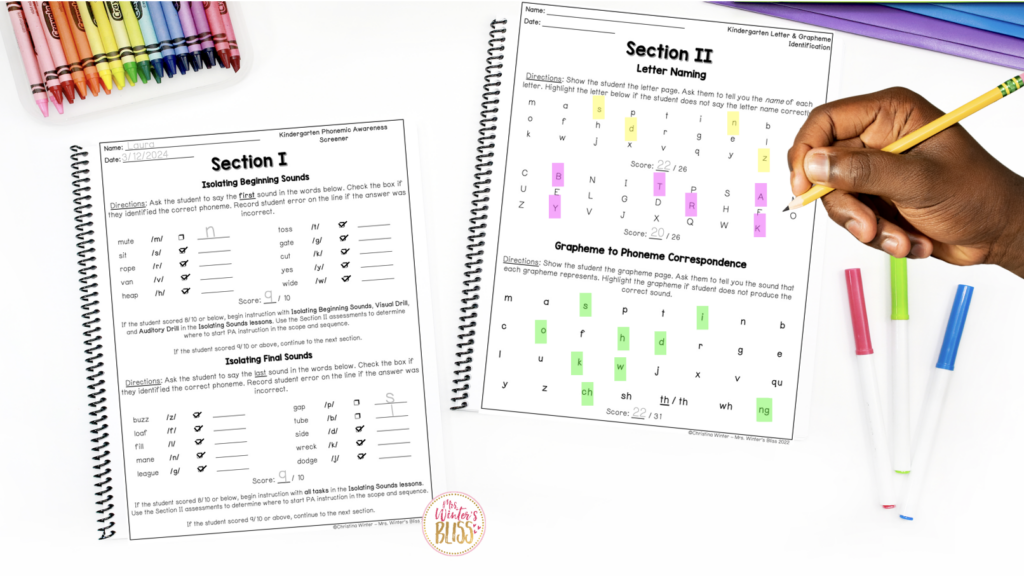
This bundle of K-2 assessments includes phonics screeners for:
- Phonemic Awareness Screener (for K and 1st grade)
- Letter & Grapheme Identification
- Reading Survey
- Spelling Survey
- Autofill Student Data Trackers and MORE!!
In addition to helping you group students, these screeners can be used as a diagnostic tool at reading benchmark periods (BOY, MOY, EOY), for report cards, or as a pre-assessment and post-assessment to measure student growth.
Click here to take a closer look at everything included in the K-2 Phonics Screeners Bundle!
Skills to Teach in Small Groups
In a small group, you provide students with targeted remediation and review that they need to master the skill you have identified as their need. Skills you will work on in small groups include:
- Phonemic awareness
- Phonics
- Decoding and Fluency
- Comprehension
- Word study/spelling
Science of Reading-Aligned Activities for Small Group Instruction
The following resources are designed to be used in small groups. They are engaging, LOW-PREP activities that target the skills you will teach in small groups AND they are aligned to the science of reading.
Phonemic Awareness Lesson Plans for Kindergarten and 1st Grade
My Science of Reading-aligned Phonemic Lesson Plans for Kindergarten and First Grade students have EVERYTHING you need to bring effective phonemic awareness instruction to your small groups!
The resource includes:
💕 Phonemic Awareness Lesson Plans Aligned to a Scope and Sequence
With this resource, you’ll get lesson plans laid out in a weekly format.
Each daily lesson plan includes a warm-up for the target skill and three activities.
- Phoneme Segmenting: students practice breaking apart each word and identifying each phoneme
- Phoneme Blending: students hear a sequence of phonemes and put them together to identify the word
- Connecting Graphemes to Phonemes: students practice connecting the phonemes in a spoken word to the letters (graphemes) that represent those sounds.
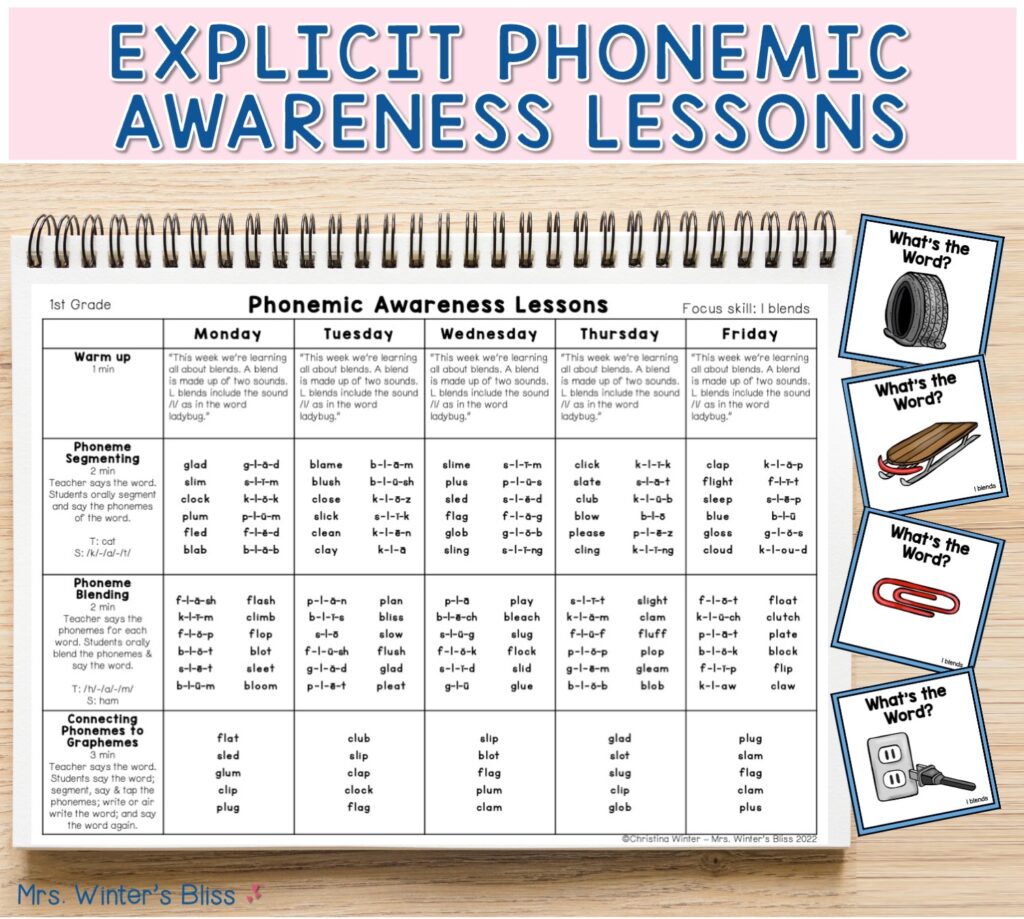
💕 Picture Word Mats
The picture word mats provide a visual representation of the words in the Connecting Phonemes to Graphemes section. This support helps students to build meaning of the words.
💕 Screener Assessments
You’ll get a two-part screener for each unit that will identify whether each student can segment and blend phonemes, as well as a spelling inventory assessment that would be given whole-group.
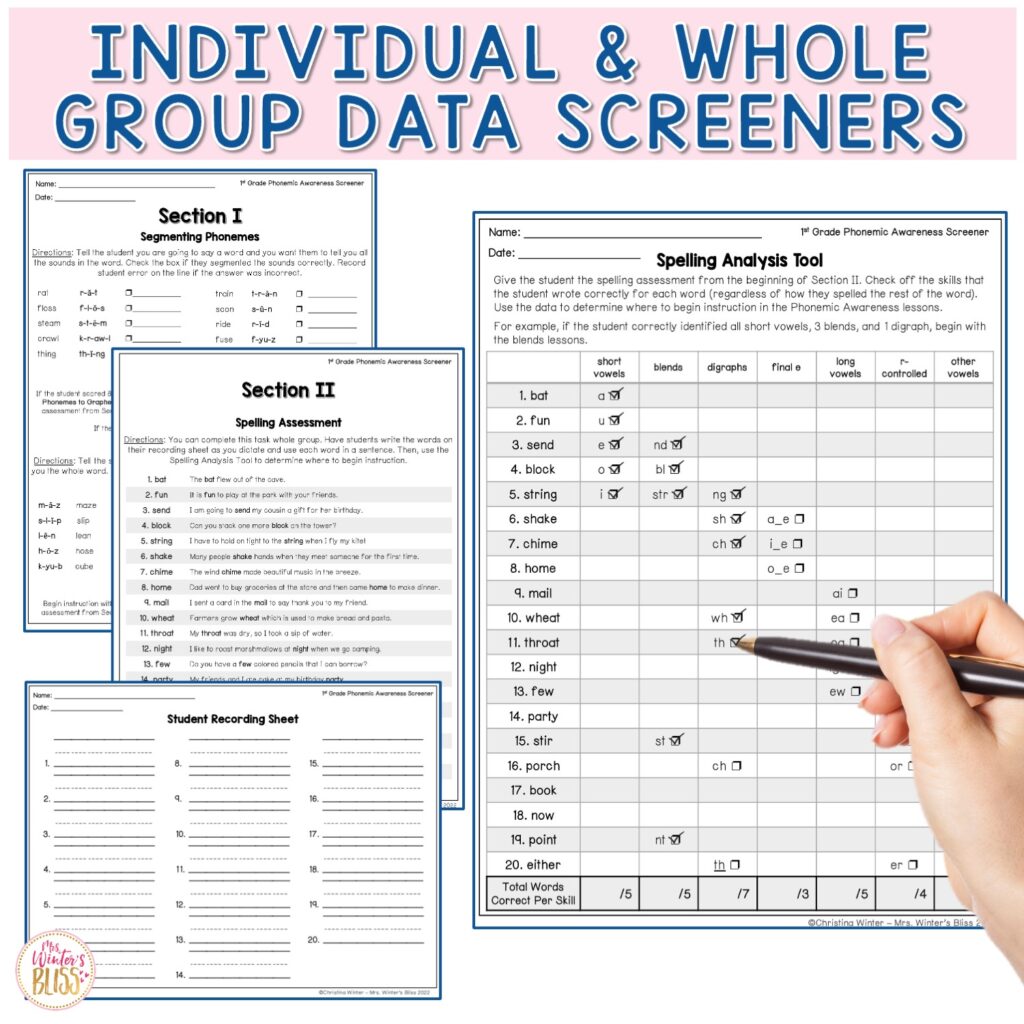
💕 Class Data Tracker and MORE!!
You can read more about the importance of phonemic awareness and download a free sample of this resource here.
Word Mapping – Connecting Phonemes to Graphemes
Word mapping is a physical way to represent the relationship between the phonemes and graphemes. It allows students to physically connect or match the letters with the sounds they represent. Ultimately, it helps build word recognition and decoding skills that improve fluency in both reading and writing. Students find word-mapping activities highly engaging because they have both visual and kinesthetic aspects.
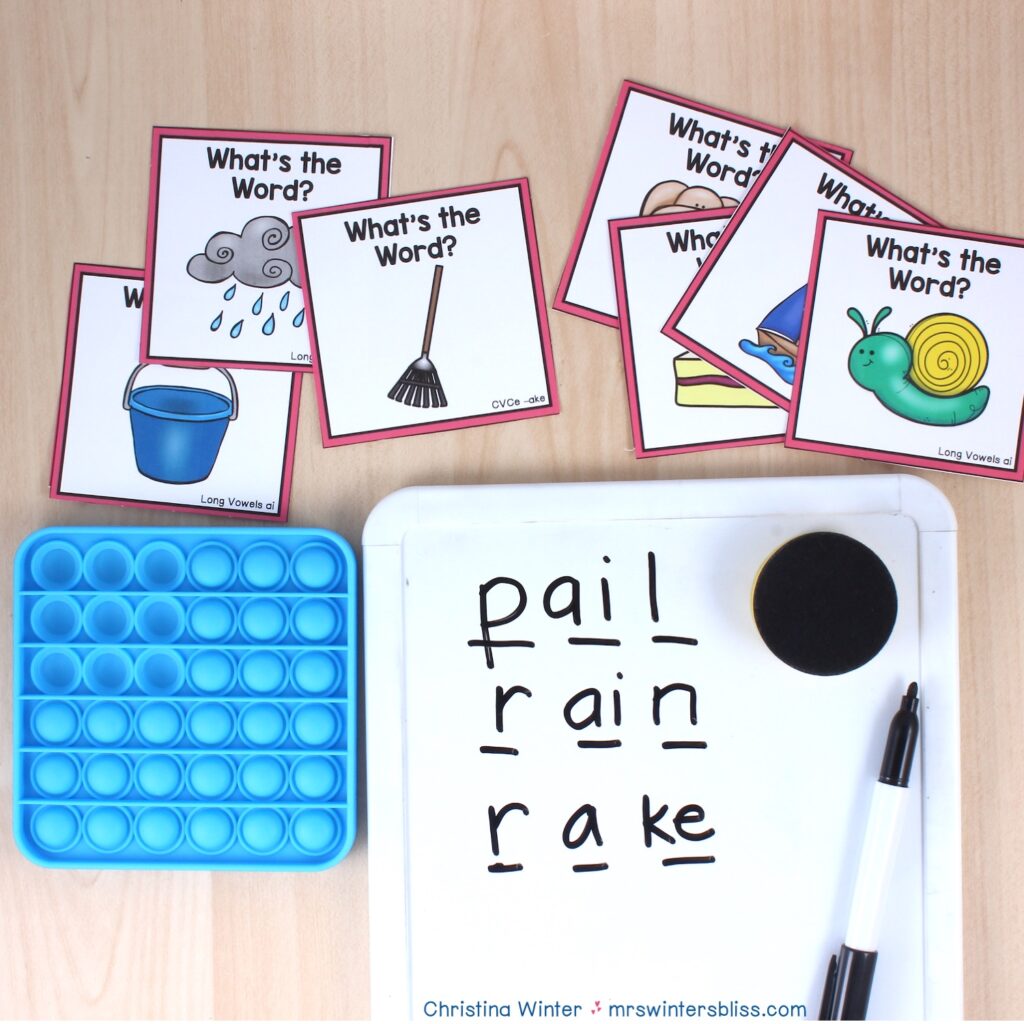
My printable and digital Word Mapping Resource has EVERYTHING you need to get students mapping words in your classroom. This resource also includes mapping boards and word image cards for your small-group instruction.
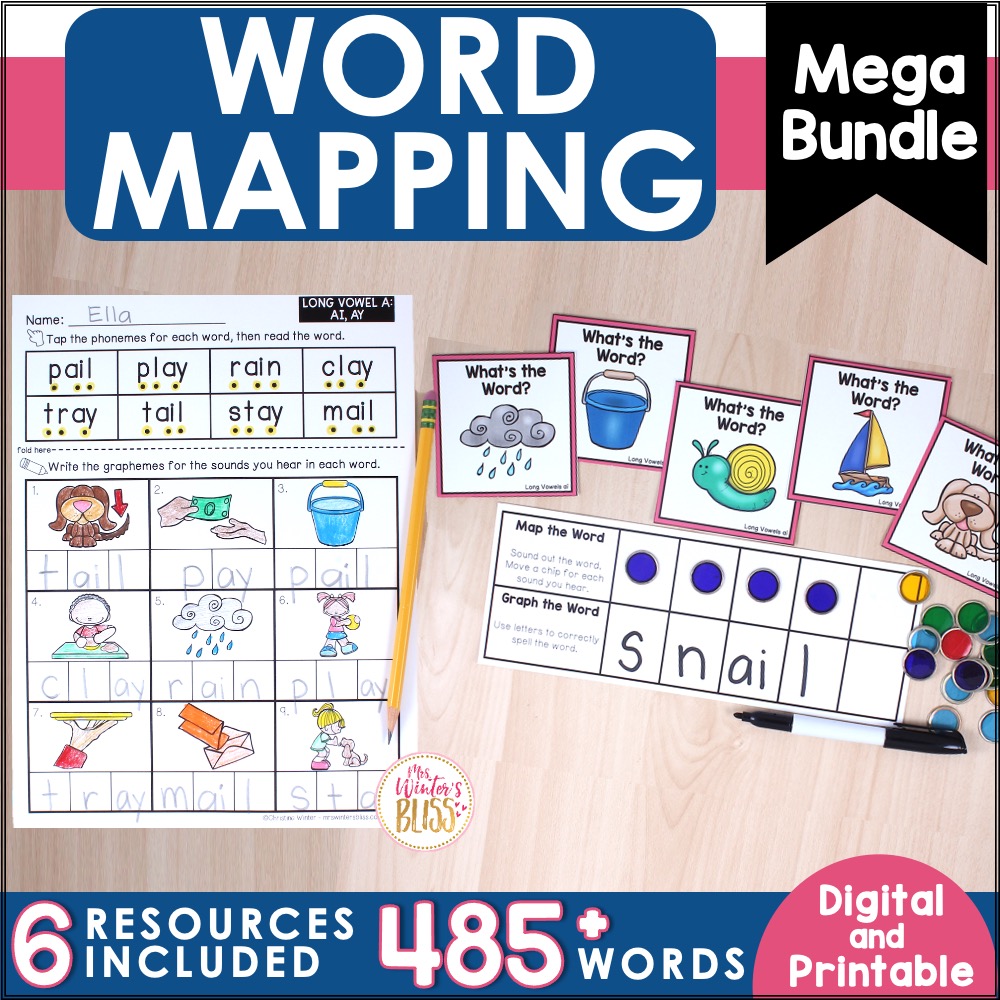
Phonics Word Sorts
Word sorts require students to think about how words work by drawing their attention to common spelling patterns. Students receive a set of words that all have something in common. They must identify the feature and sort them accordingly.
Research on information-processing tells us that students need to spend time elaborating and summarizing their new learning in order to store it in their long-term memory. For this reason, the “what did you notice” section of this activity is key, as is the discussion that may take place after the word sort. Both help students to verbalize the new learning that applies to spelling.
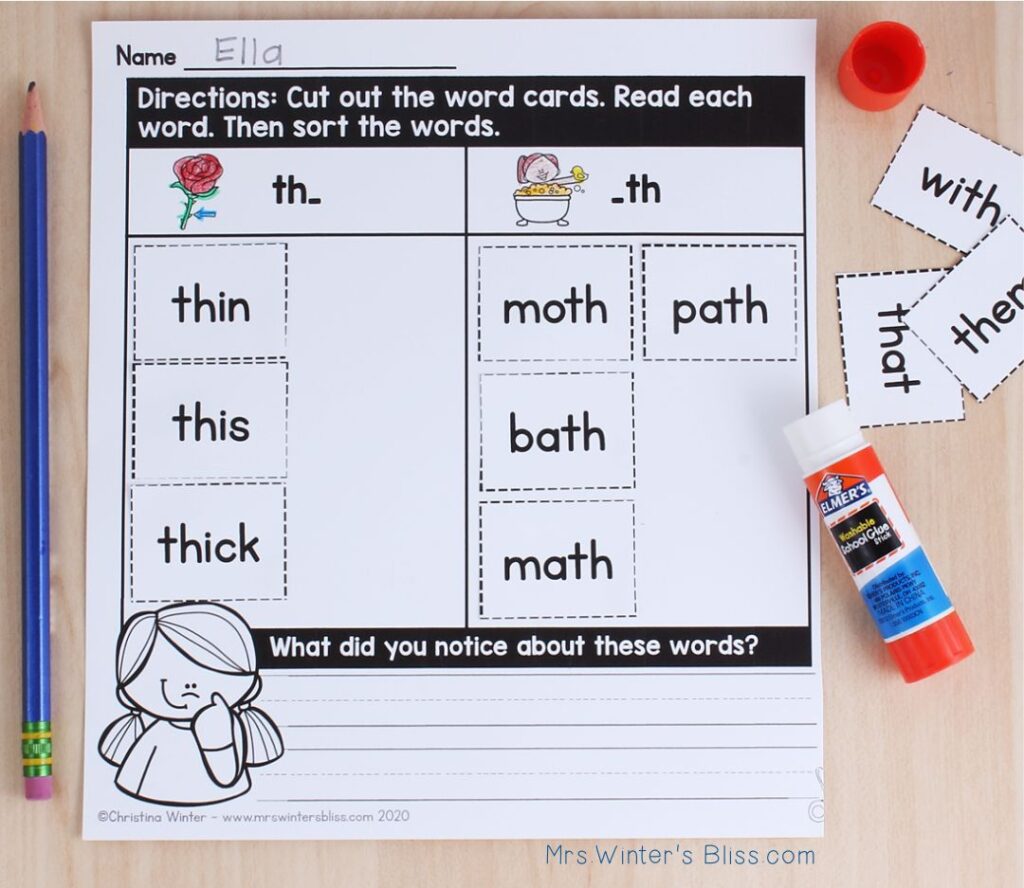
My digital and printable phonics word sorts include two levels of sorts: whole words and words with the missing target spelling pattern to assign to your students. Students will look for common spelling patterns, sort, then communicate what they notice and have learned about the words they’ve sorted. You can take a closer look at them here.
Decodable Passages or Decodable Books with Comprehension Questions
The science of reading shows us that the connection between what our students learn in phonics and what they read is imperative for building a strong foundation in early reading. The text in these decodable books and decodable passages resources are a phonics-based controlled text that contain target phonics skill words, previously taught phonics skill words and irregular high-frequency words. The comprehension questions help to bring discussion about text and writing into your small group instruction. The resources also include activities for before, after and during reading.

While these two separate resources do follow the same research-based scope and sequence, they do not include the same texts. The passages and stories are different, giving you more options for your instruction.
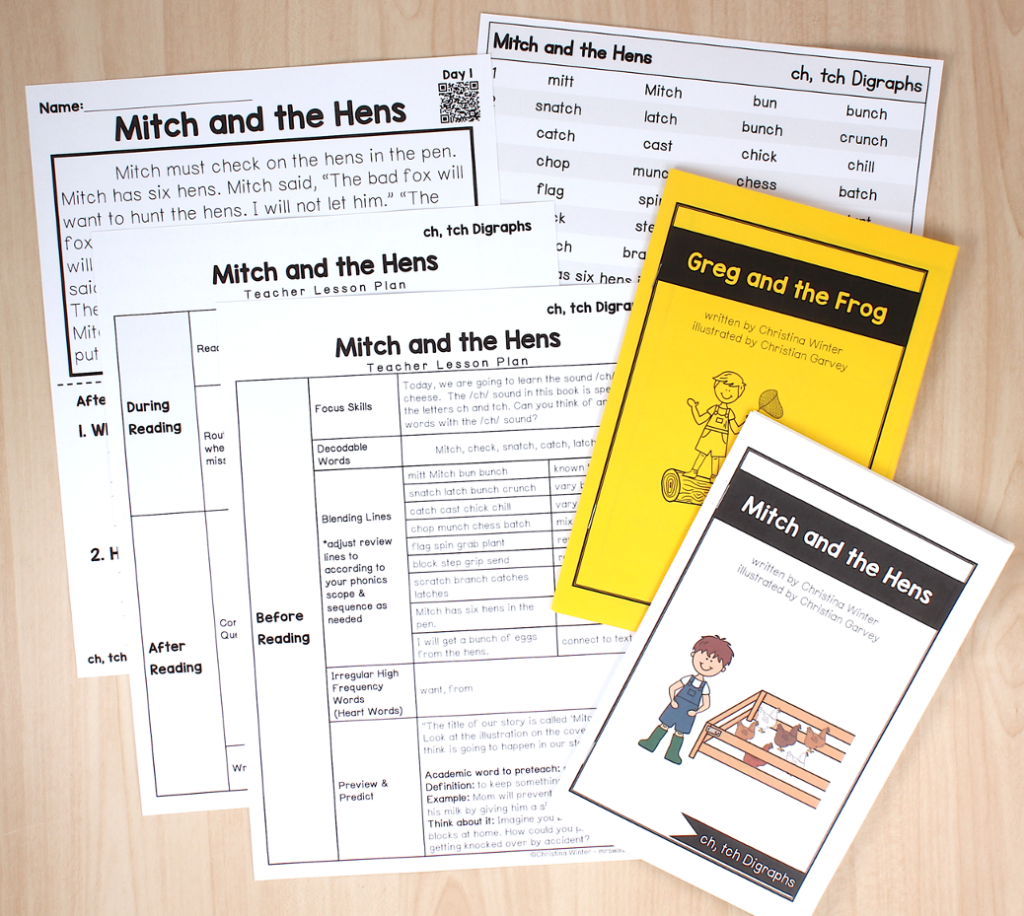
Dictation Practice
Dictation is a whole or small group activity that offers students guided spelling practice. It is a systematic way for you to connect the skills you teach in reading to student writing. Just as decodable texts allow students to apply the phonics skills you have taught to their reading, dictation practice allows them to apply the skills to their writing.
Dictation is not an assessment. It allows you to check students’ understanding of sound-spelling correspondences. Your dictation exercise will contain the sounds they are just learning, as well as review words from previous weeks. Dictation gives them the extra practice they need to reach mastery. When there are errors, provide immediate corrective feedback.
If you are looking for a simple way to bring dictation practice into your small groups my Yearlong Dictation Resource for Kindergarten, first and/or second grade is all you need!
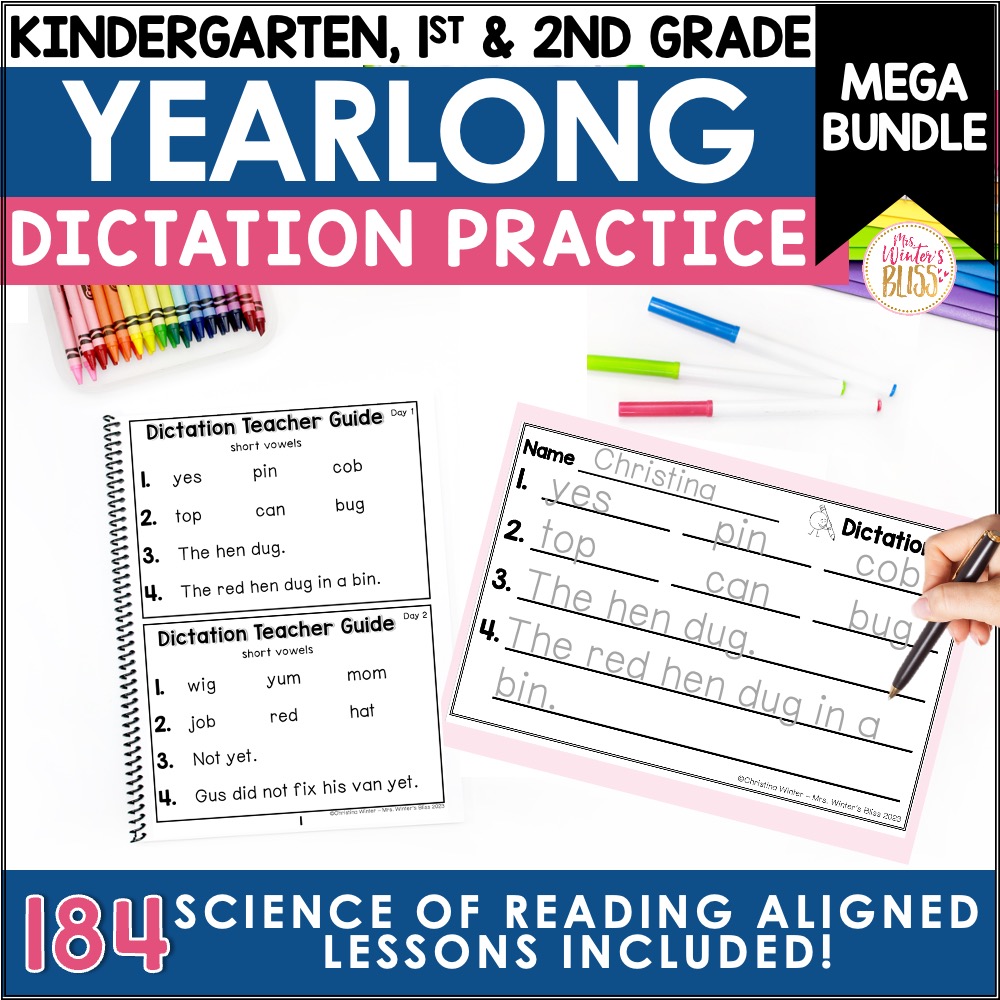
This resource follows a research-based scope and sequence and includes dictation practice activities for each week of the school year.
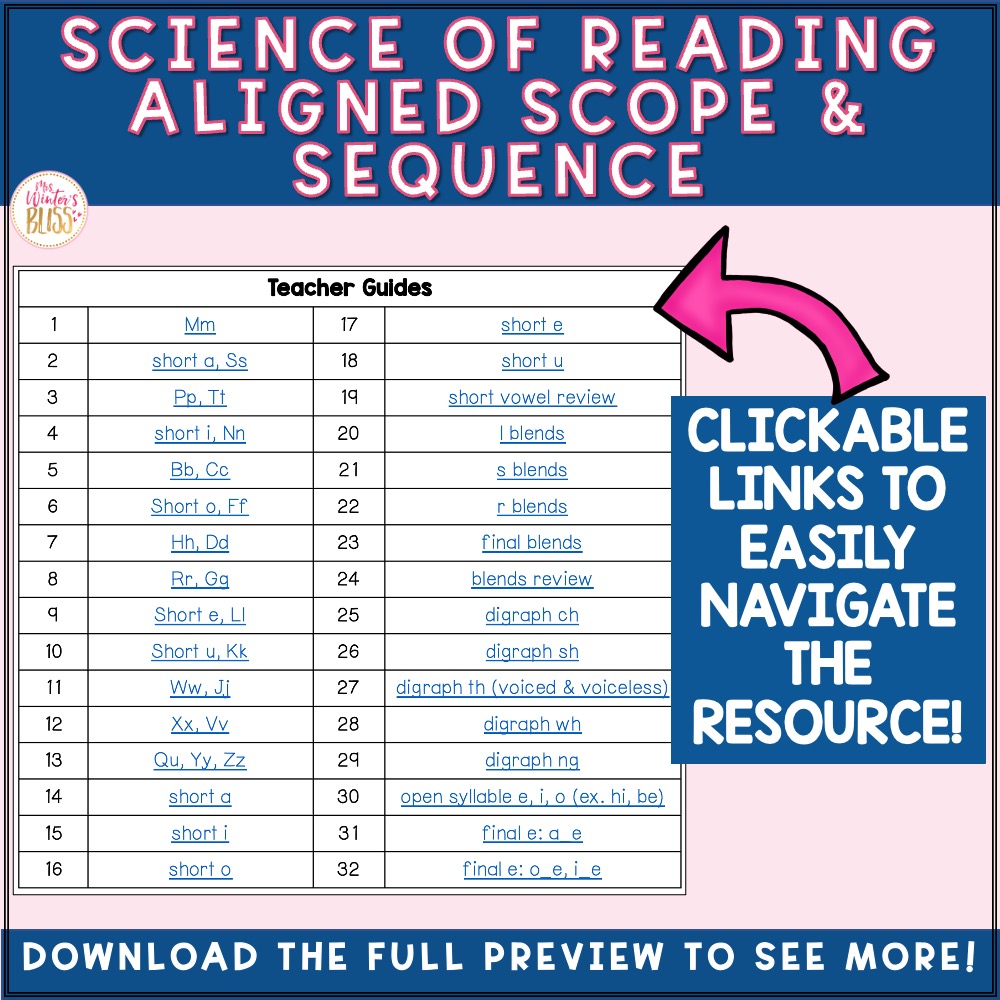
Each week includes 2 teacher guides that highlight the week’s focus skill and previously learned phonics skills. In addition, students get practice with heart words (irregularly spelled high-frequency words) in the sentence portion.
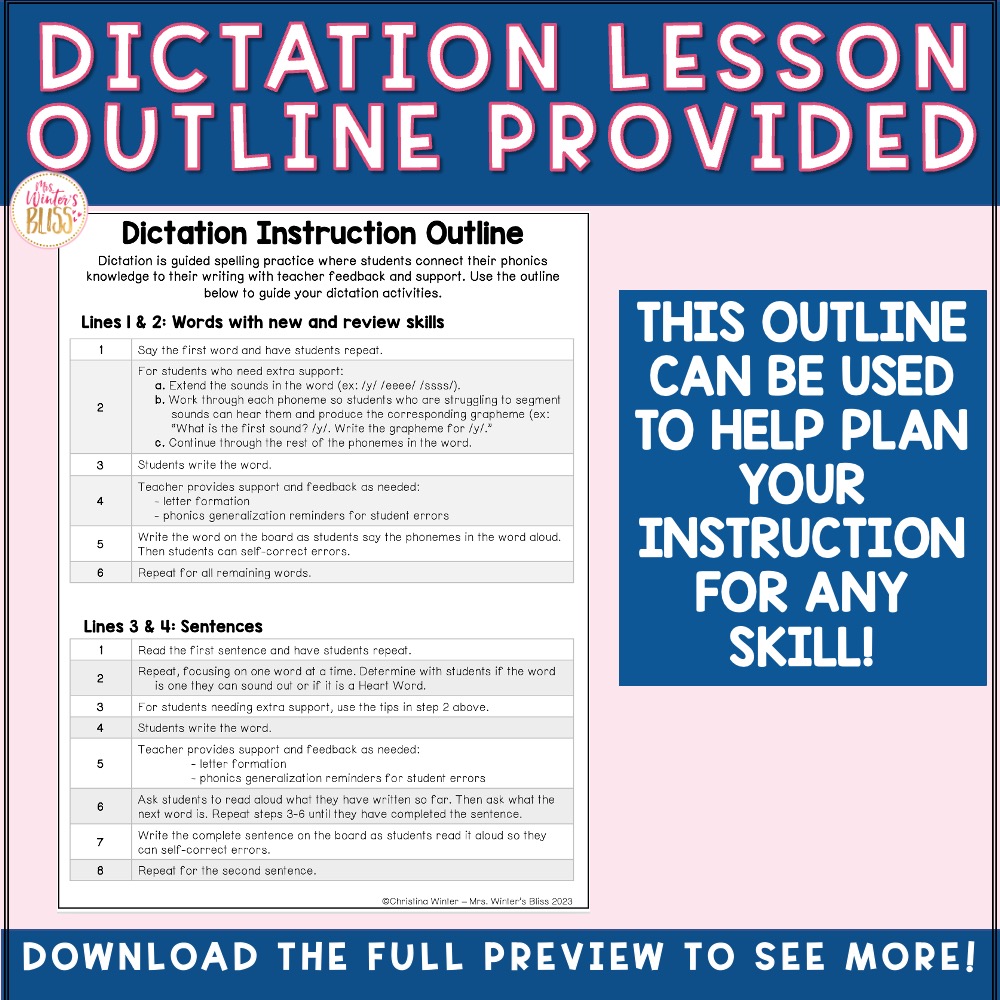
A lesson outline for teacher guidance and sample lessons are also included. The resource includes a variety of student dictation recording sheets so you can choose the one that works best for your students.
Take a closer look at this Yearlong Dictation Resource here.
“What are the other kids doing while I work with my small group?”
This is is a question that gets asked frequently! The answer is they are engaging in intentional literacy center activities that reinforce skills you have already taught. These activities are not new learning, they are not skills the students are still acquiring. They are skills that you have seen them perform successfully and accurately when they are with you. This ensures they can work independently and you can focus your attention on your small group.
Now you may be wondering…if they can already perform the skills successfully, then why do they need more practice? The truth is, we often underestimate the amount of practice and repetition it takes for students to master the skills we teach. According to Wiley Blevins, in order for a skill to stick, it must be purposefully and systematically reviewed for 4-6 weeks. Literacy centers offer students the practice and review they need for mastery.
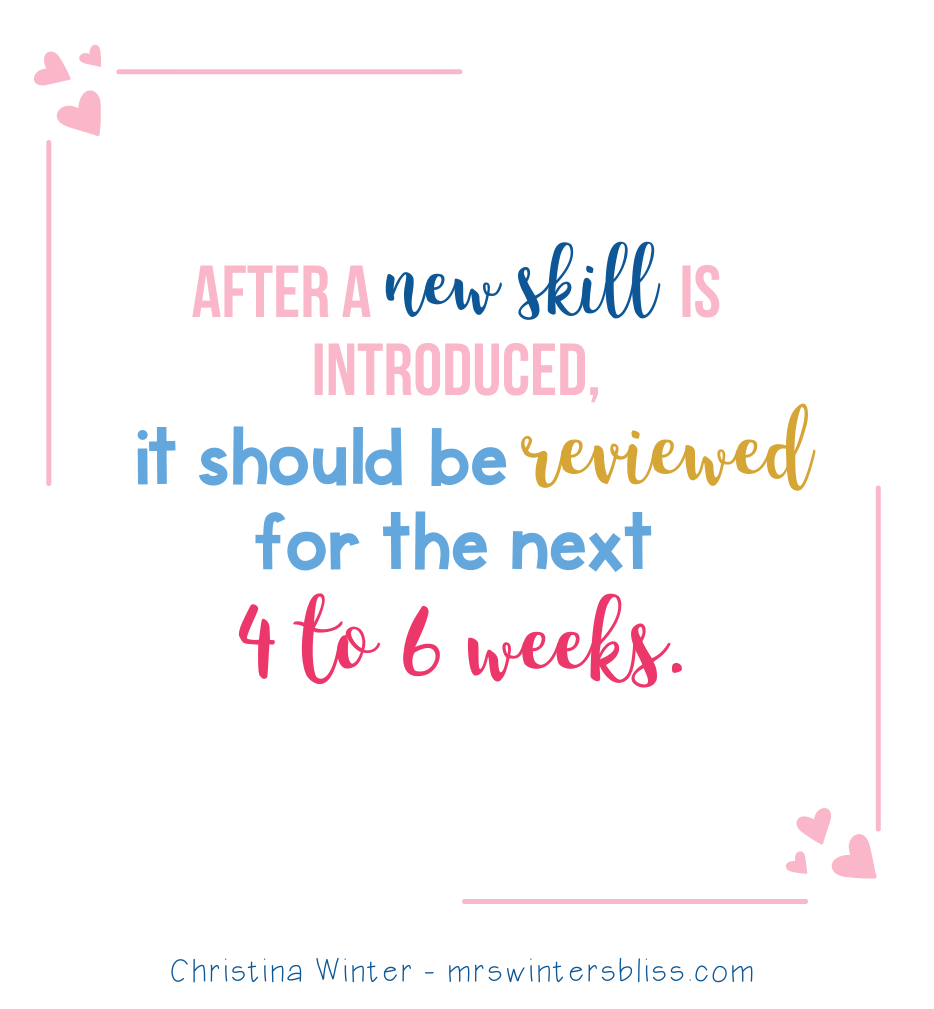
Keep in mind, that literacy centers and rotations are not something you just hop right into. They involve routines and expectations that must be explicitly taught and practiced. Take a look at this blog post for tips on how to introduce your literacy centers and build independence.
I know I have shared a lot of information today! To help you make sense of it all, I am happy to share a FREE downloadable planning template for small group instruction.
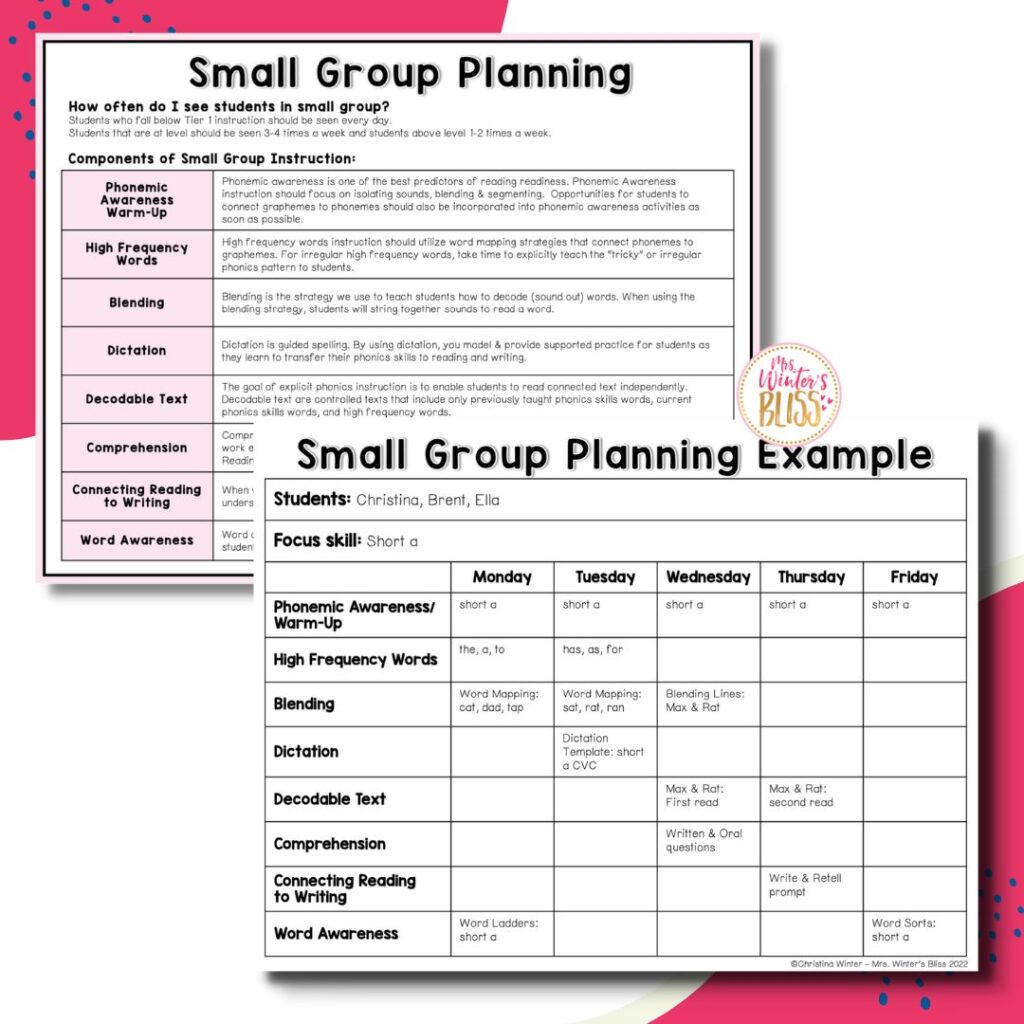
.
Drop your email below to instantly download these editable small-group planning templates
I hope the information and resources I’ve shared here today will help you plan and implement effective small group instruction in your classroom. Be on the lookout for the next posts in this series on the SoR 90 Minute Literacy Block where I’ll focus on whole group word recognition instruction and whole group language comprehension instruction.
-shop this post-
-
Sale Product on sale
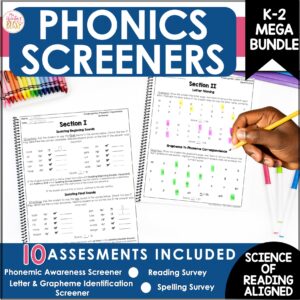 Kindergarten, 1st Grade, 2nd Grade Phonics Screeners – Spelling Reading AssessmentsEarn 0 Reward Points
Kindergarten, 1st Grade, 2nd Grade Phonics Screeners – Spelling Reading AssessmentsEarn 0 Reward Points$17.00Original price was: $17.00.$13.60Current price is: $13.60. -
Sale Product on sale
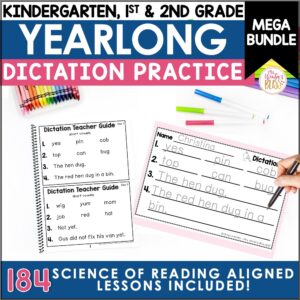 Dictation MEGA Bundle – Kindergarten, 1st, 2nd GradeEarn 0 Reward Points
Dictation MEGA Bundle – Kindergarten, 1st, 2nd GradeEarn 0 Reward Points$18.00Original price was: $18.00.$14.40Current price is: $14.40. -
Sale Product on sale
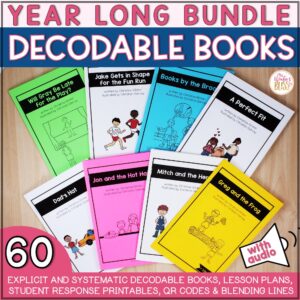 Decodable Books BUNDLE – Comprehension Questions aligned to Science of ReadingEarn 0 Reward Points
Decodable Books BUNDLE – Comprehension Questions aligned to Science of ReadingEarn 0 Reward Points$60.00Original price was: $60.00.$48.00Current price is: $48.00.Rated 5.00 out of 5 based on 6 customer ratings -
Sale Product on sale
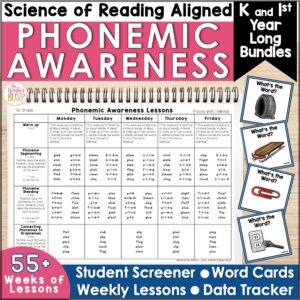 Kindergarten & 1st Grade Phonemic Awareness Yearlong Curriculum – BUNDLEEarn 0 Reward Points
Kindergarten & 1st Grade Phonemic Awareness Yearlong Curriculum – BUNDLEEarn 0 Reward Points$50.00Original price was: $50.00.$37.50Current price is: $37.50. -
Sale Product on sale
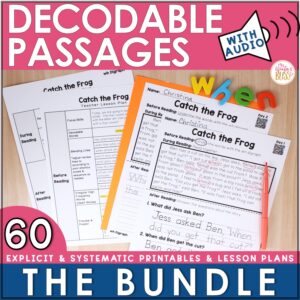 Decodable Passages with Comprehension Questions – BundleEarn 0 Reward Points
Decodable Passages with Comprehension Questions – BundleEarn 0 Reward Points$38.25Original price was: $38.25.$30.60Current price is: $30.60.Rated 5.00 out of 5 based on 11 customer ratings -
Sale Product on sale
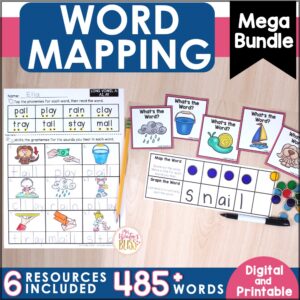 Word Mapping – Connecting Phonemes to Graphemes MEGA BUNDLEEarn 0 Reward Points
Word Mapping – Connecting Phonemes to Graphemes MEGA BUNDLEEarn 0 Reward Points$24.50Original price was: $24.50.$19.60Current price is: $19.60.Rated 5.00 out of 5 based on 12 customer ratings -
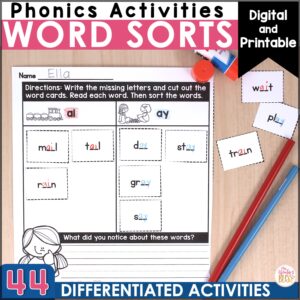 Phonics Word Sorts – DIFFERENTIATED – digital & printableEarn 0 Reward Points
Phonics Word Sorts – DIFFERENTIATED – digital & printableEarn 0 Reward Points
$13.00Rated 5.00 out of 5 based on 8 customer ratings
–PIN for LATER–










